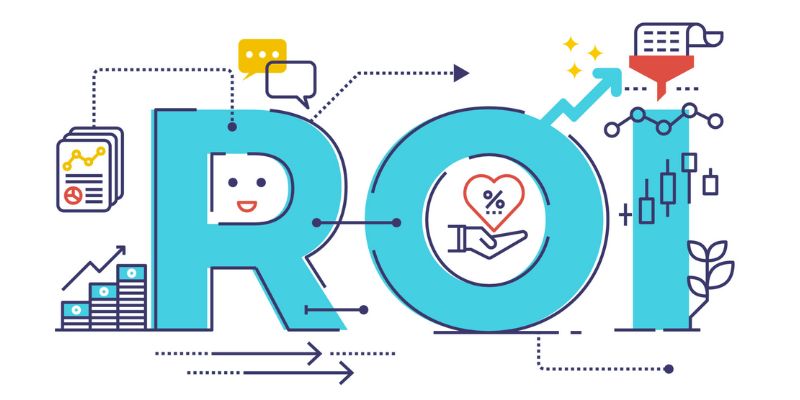Advertisement
GenAI is an artificial intelligence system that helps you create new content in the blink of an eye, including images, text, coding, music, and whatnot. While every individual and business is now heavily relying on this Generative AI to generate high-quality content, they often forget that there might be some errors. That's why you should evaluate its performance from time to time so that it gets easier to identify loopholes and fix them in a timely manner.
ROI, goal completion, task performance check, fidelity, personality measurement, safety, accuracy, and inference speed are the most important GenAI value metrics that you must consider to avoid any loss and inconvenience. If you are interested in learning about them in detail, keep reading, as this is what we will discuss today!

If you are still confused about measuring GenAI’s performance, let us tell you why it is so important to monitor its functioning. Here are the important reasons for considering GenAI’s performance: optimizing implementation, tracking progress, and bias monitoring.
Don’t know what parameters to check while testing the performance and business value of your AI system? Don’t worry; we are here to help you out as best we can. ROI, goal completion, task performance check, fidelity, personality measurement, safety, accuracy, and inference speed are the prominent metrics for GenAI, which we have discussed below in detail:
Measuring ROI is important because it tells whether a machine learning program is delivering its true value. This value also comes from other benefits, including profits, increased sales, productivity, and customer engagement. First, we need to calculate the total investment, including the model usage fee, implementation costs, training costs for the team, etc. Then, calculate the returns, apply a formula, and you are good to go.

Another way to measure GenAI performance is to measure goal completion. It measures how many desirable results you achieve through it. Before measuring it, you should define what success means to you and then use task-specific metrics. The different ways to track goal completion can be structured evaluation or human feedback. And feedback loops. You can also track the overall performance trends, such as goal completion rate, drop-off or fallback rates, and revisions per output.
Fidelity is another reliable metric for gauging the performance of generative AI systems in an organization. It measures the similarities between generated output and real data. A system with a high fidelity score shows accurate results. It is really important as both customers and organizations rely on these AI models to serve them authentic results and avoid misinterpretation. However, keep in mind that achieving maximum fidelity and ROI together is not always possible.
Task performance checks how the AI model responds to a given prompt, such as solving a problem, summarizing a long text, or any other assigned task. It also includes measuring the generation consistency, which measures whether similar prompts result in similar responses. Prompt sensitivity measures how long a prompt is needed to get the optimum results from the AI tool you are using.
The safety metrics test risks such as ethical concerns, toxicity, and truthfulness. They also measure the prevalence of biased responses, leakage of personal information, and AI hallucinations. The best way to check a system's safety is by running multiple automated tests covering various aspects. However, as the training parameters data change over time, changes in benchmarking might also be required.
Measuring GenAI's personality involves various methods for analyzing responses and behaviors in multiple contexts. These include using AI-based personality tests, assessing its ability to mimic human responses, and analyzing interactions. The AI-based personality tests analyze text samples, demographic data, and questionnaires. Moreover, the interaction analysis measures free-flowing interactions, social media data, dialogue, and role-playing. On the other hand, for personality replication testing, AI can be trained to replicate humans and evaluated using tools like the General Social Survey.
Accuracy measures how well the predictions of a model align with the desired results. It is important to check accuracy because, generally, LLMS have some accuracy problems, and they are not easy to determine. The easiest way to check the accuracy is to assess it in domains such as coding using some benchmarks. Here are some common evaluation methods:
It quantifies the speed and efficiency of the AI model. It is usually measured in iterations per second, which affects the system's inference cost. Lower latency results in reduced cost, a smaller carbon footprint, and enhanced user experience. Considering the speed of your working model is important because slow inference is a major barrier to your business's scalability and cost efficiency, and no business wants that.
No doubt, AI has made our lives easier, but it is not wise to be heavily dependent on it without a proper check and balance. Don't worry if you are new to this; we are here to tell you what you need to know. If you are using GenAI for your business, you must define some metrics to check the value of the AI system. You must consider ROI, goal completion, task performance check, fidelity, personality measurement, safety, accuracy, and inference speed of the system.
Advertisement

The industrial robotics market is projected to reach $291 billion by 2035, driven by advances in technology, factory automation, and rising global demand for smarter production systems

Explore how the SQL NOT IN operator really works, where it can trip you up, and how to use it safely without running into hidden pitfalls like NULL values or performance slowdowns

Looking to boost your SEO in WordPress? Discover 10 AI-powered tools and strategies to improve your content, keyword research, image optimization, and more in 2025.

Discover 8 AI tools every content writer should use to save time, improve quality, and streamline content creation tasks.

Need AI built for healthcare, not general use? Aloe offers focused, open medical language models designed for clinical tasks, documentation, research, and patient support

Autonomous AI is shaping the future due to its efficiency, cost-effectiveness, improved customer interactions, and strong memory

Google has updated its stance on AI-generated content. Learn how to navigate Google’s new policies, avoid penalties, and create high-quality content that meets search engine standards.

Explore 5 free AI tools powered by ChatGPT that help you write better emails and summarize inbox content in seconds.

Snowflake’s text embedding models are revolutionizing data management by making machine learning accessible within SQL environments. Learn how these models are reshaping business operations

Discover 7 questions and requests that ChatGPT is unable to answer due to privacy rules, ethics, or tech limitations.

Explore the growing popularity of AI chatbots and their role in delivering faster, smarter support to users everywhere.

Install and run ChatGPT on Windows using Edge, Chrome, or third-party apps for a native, browser-free experience.